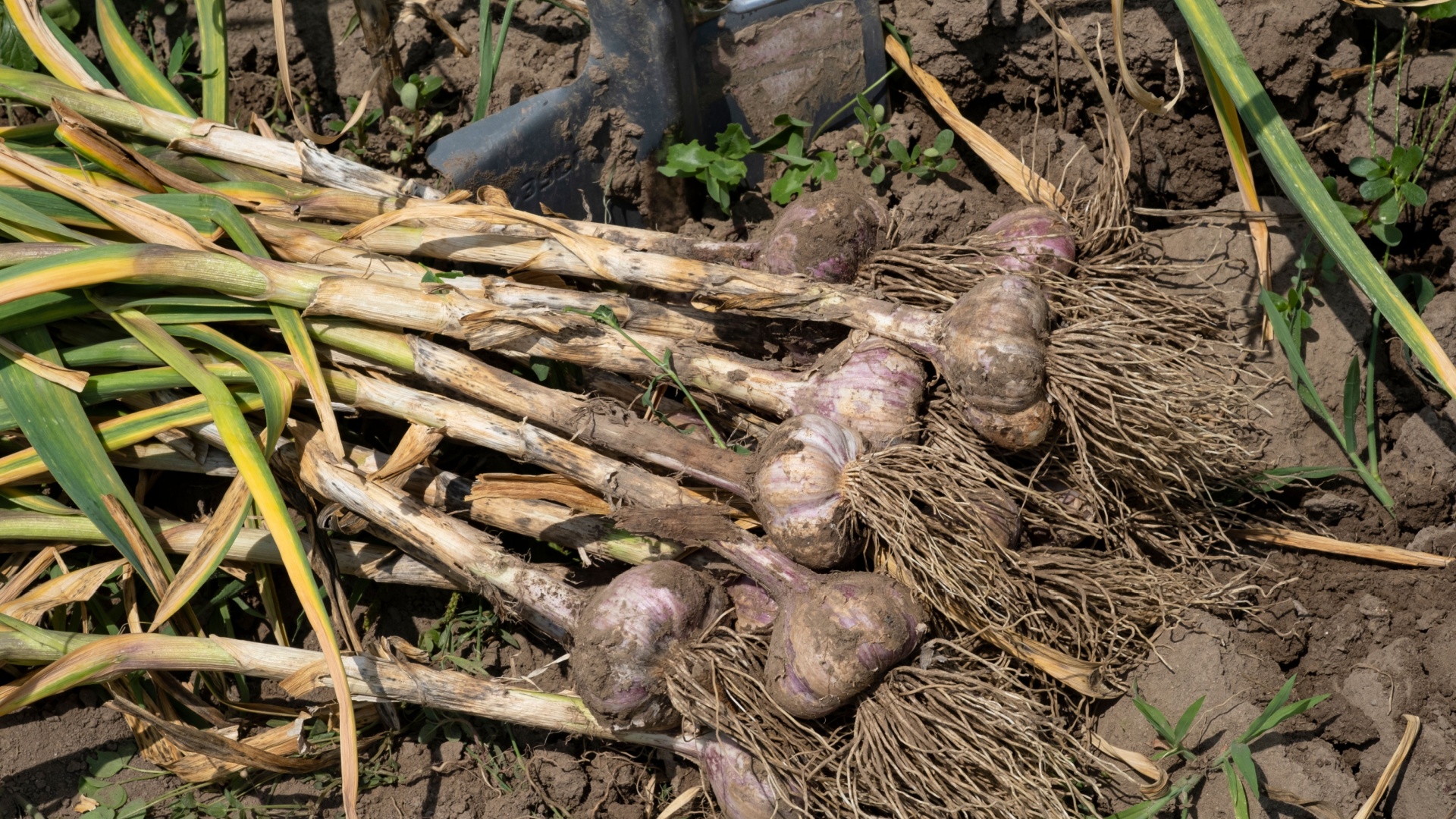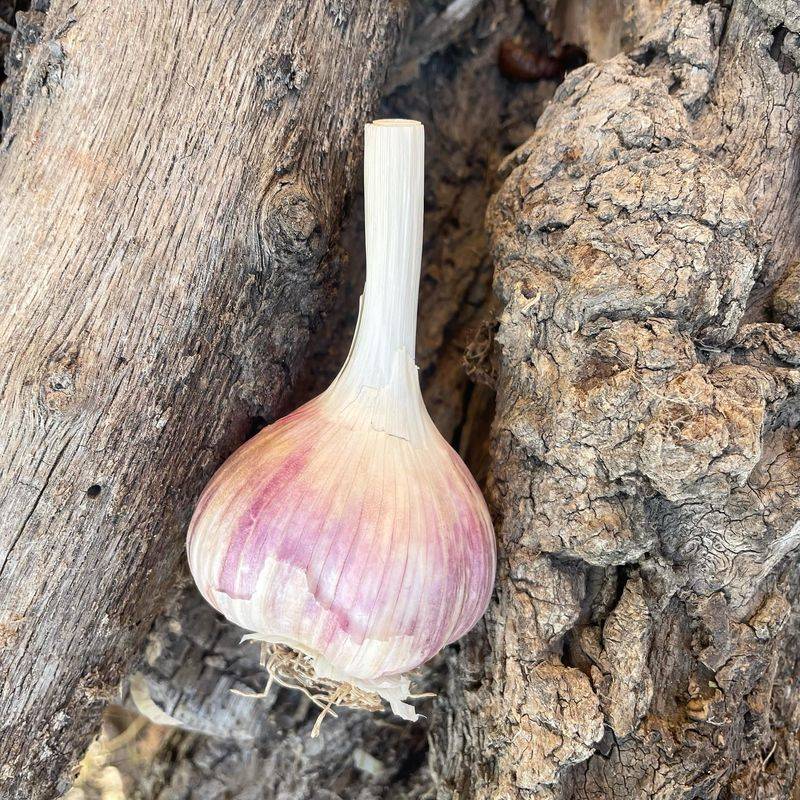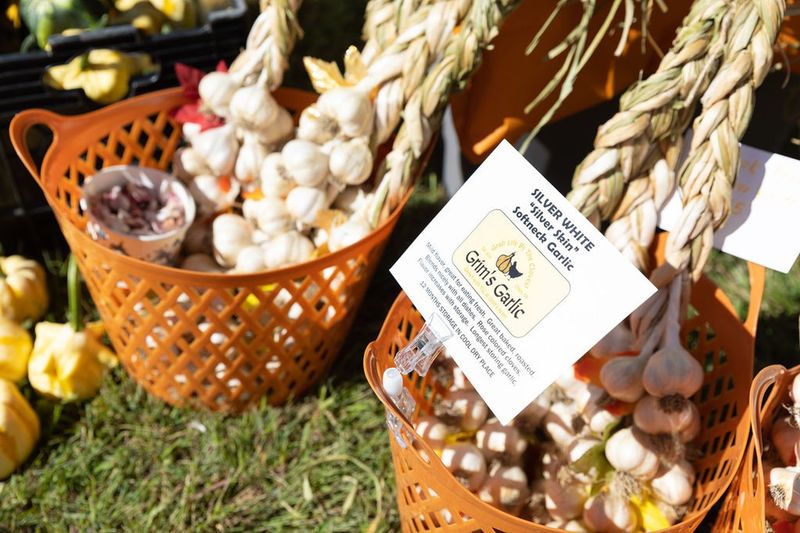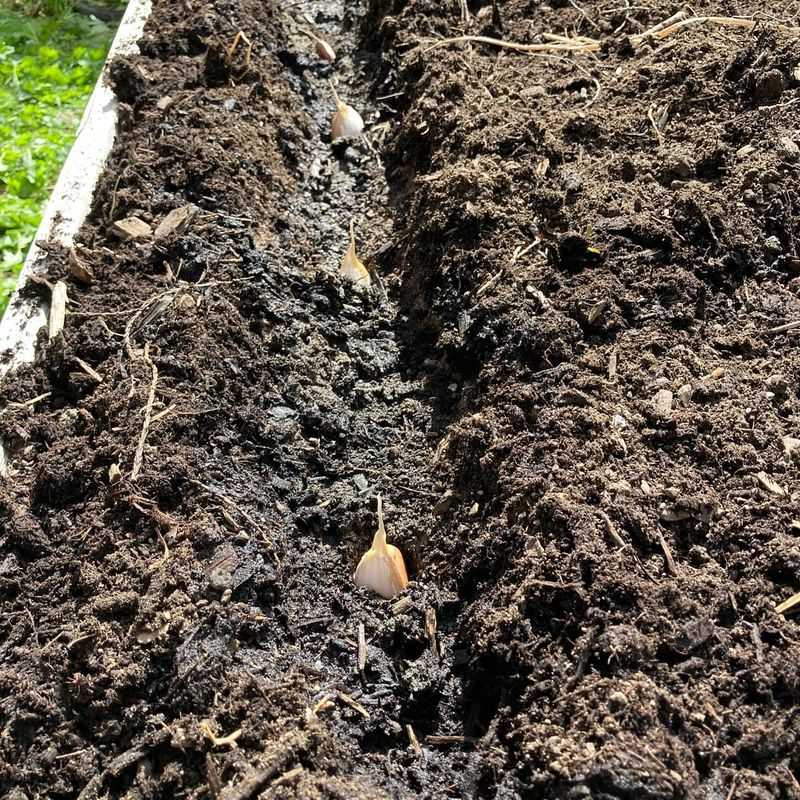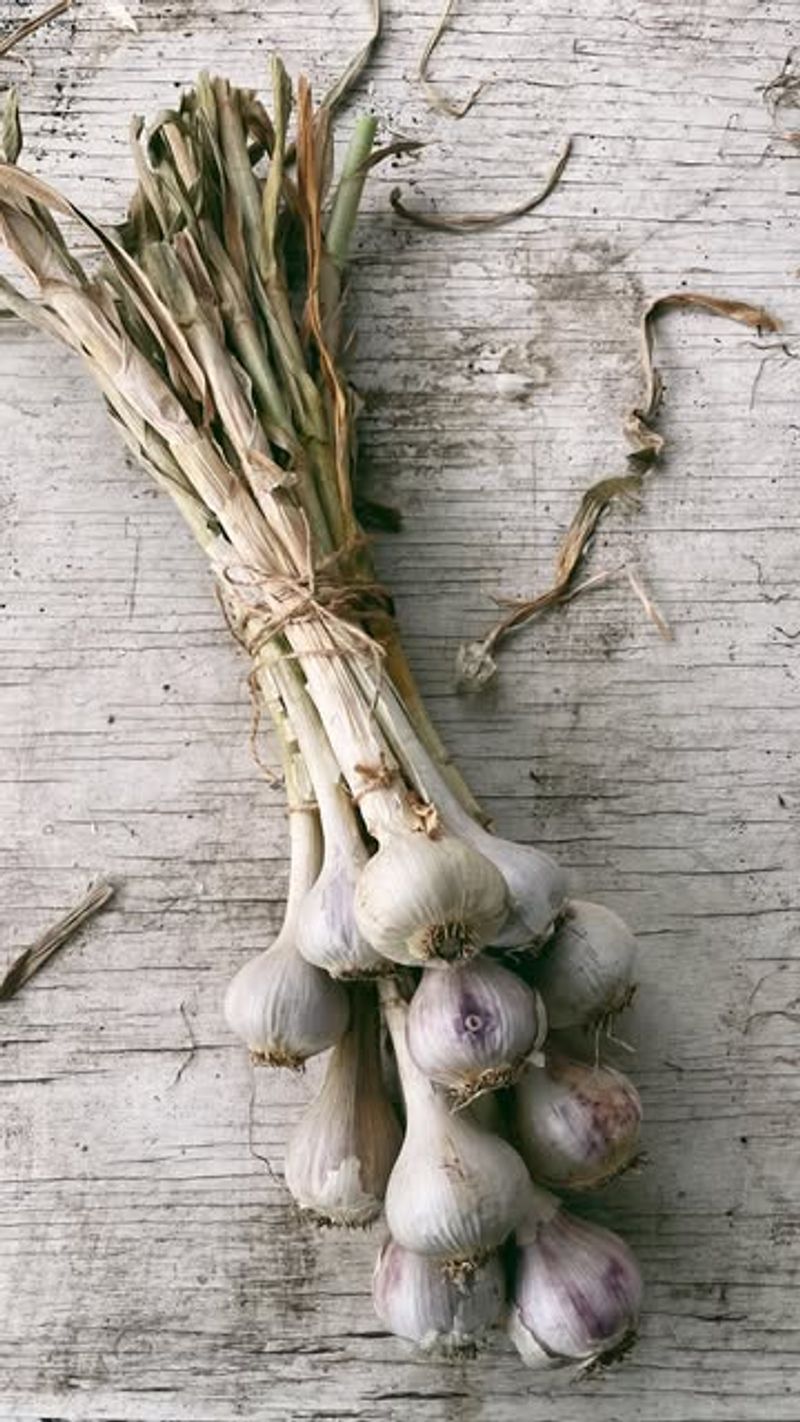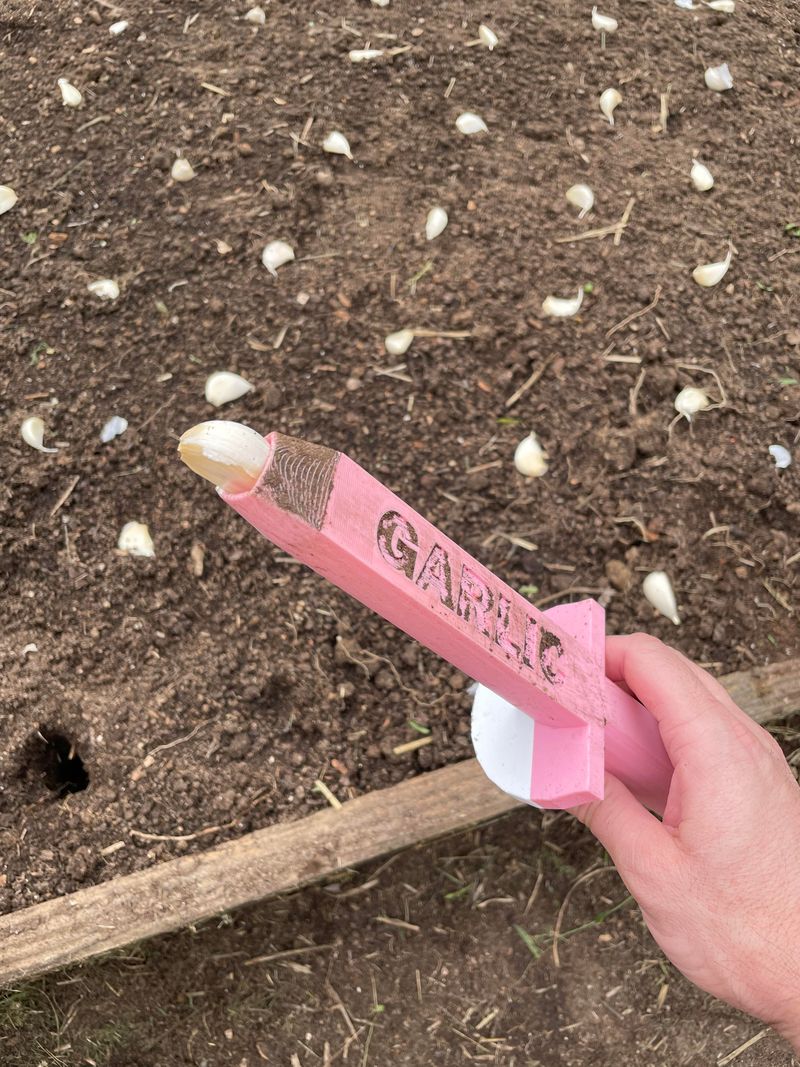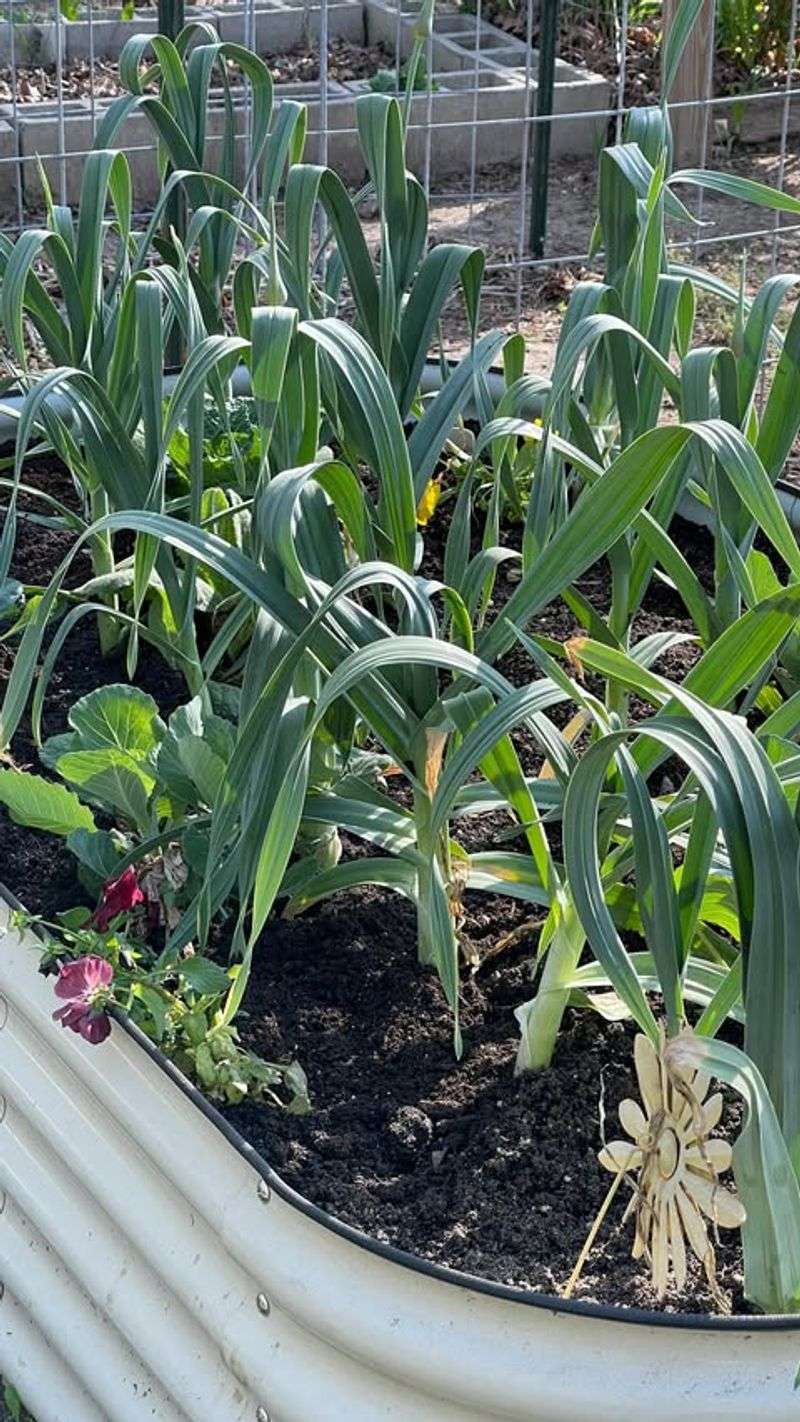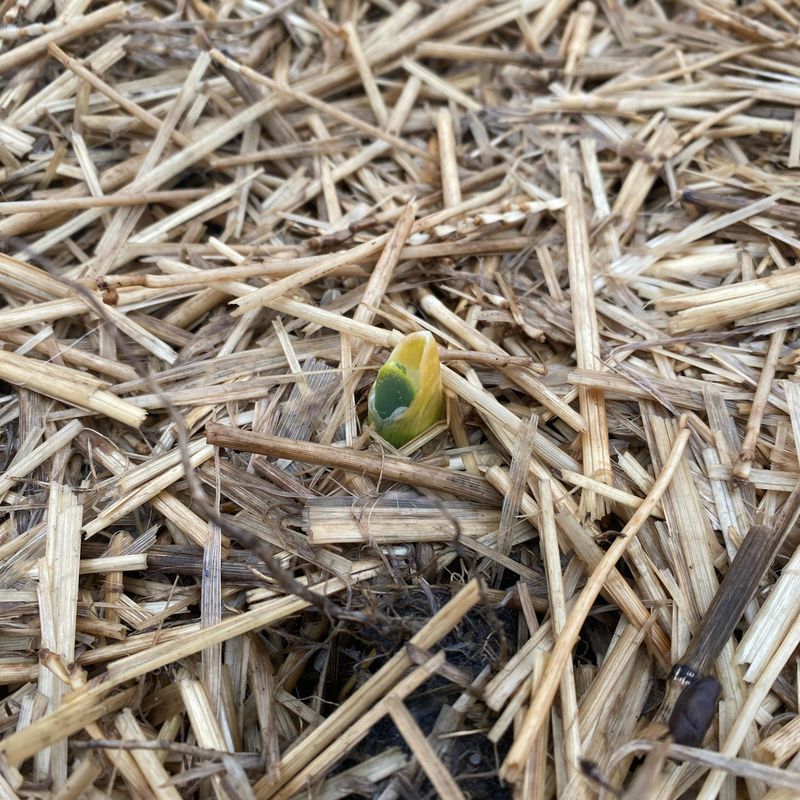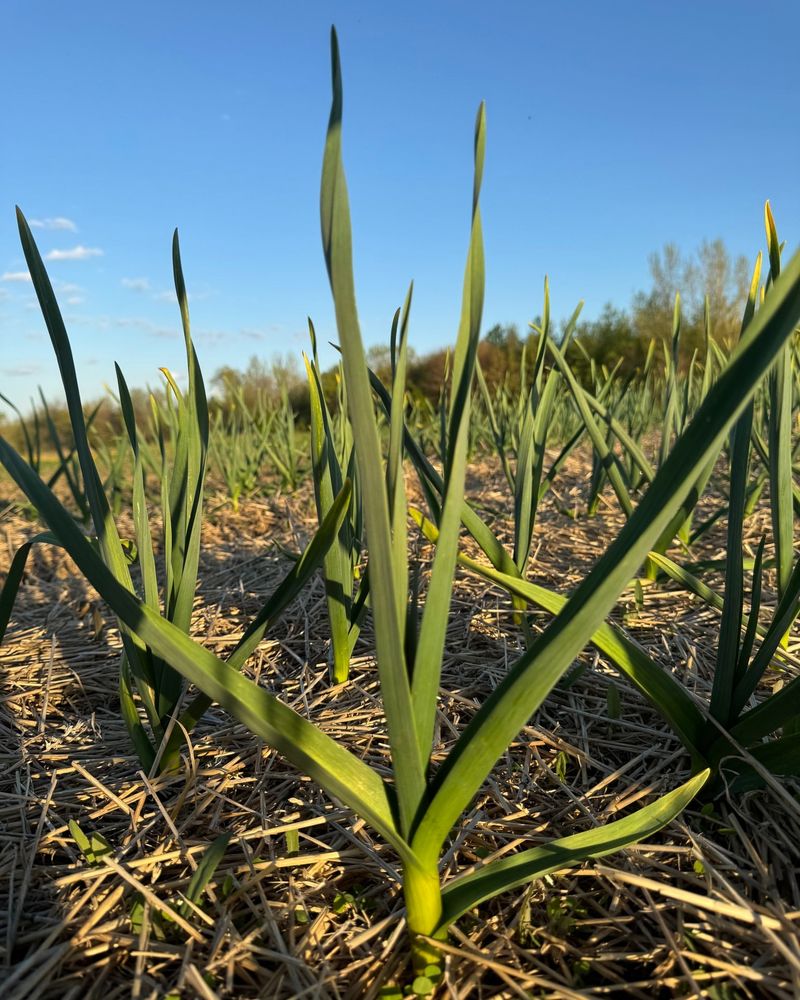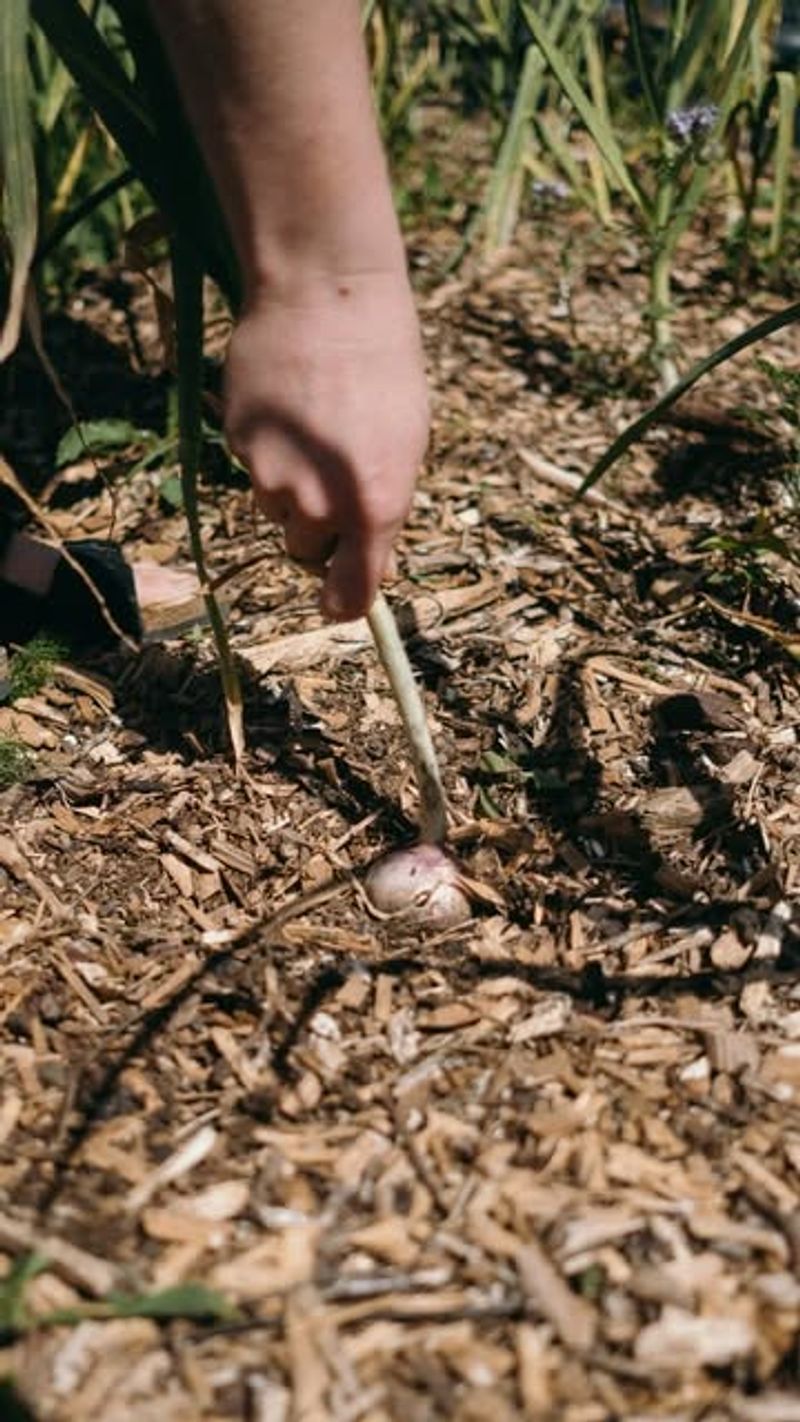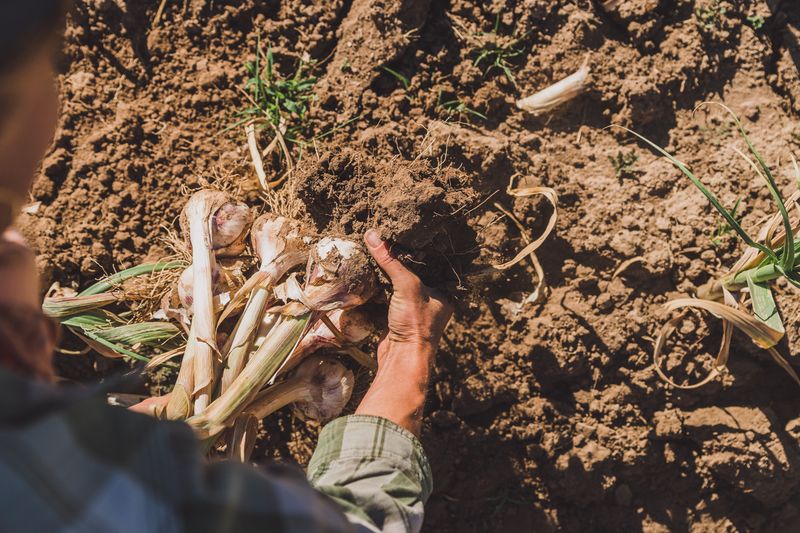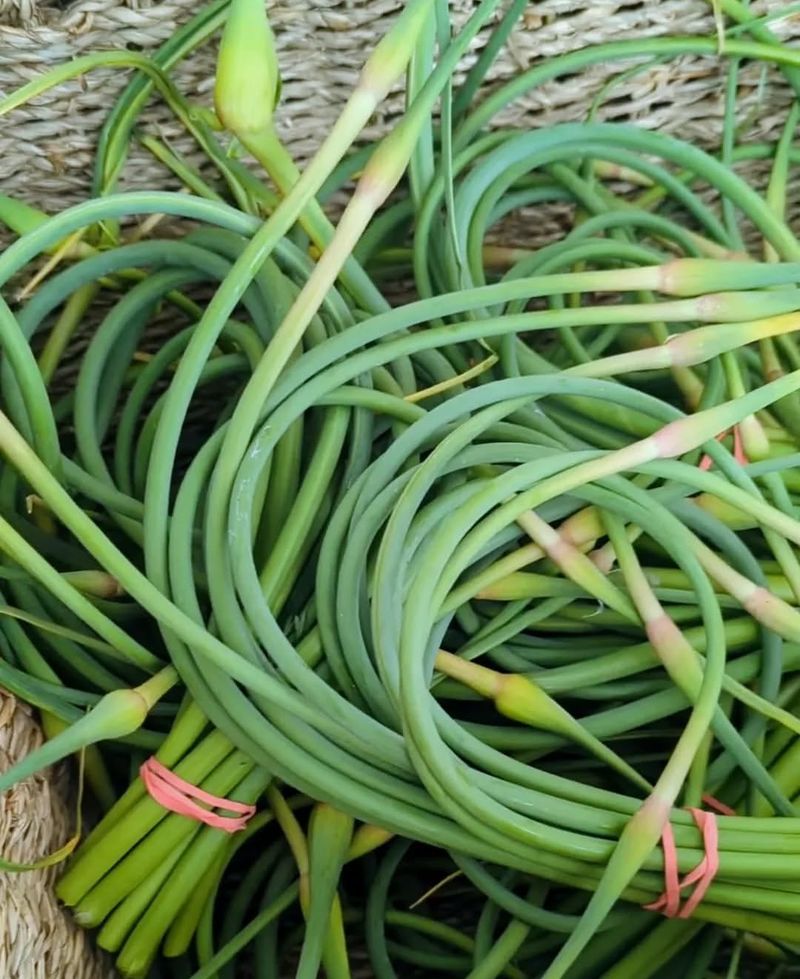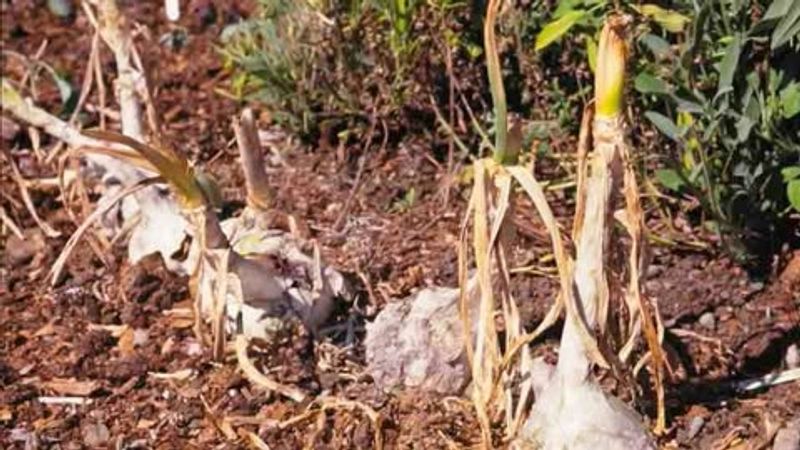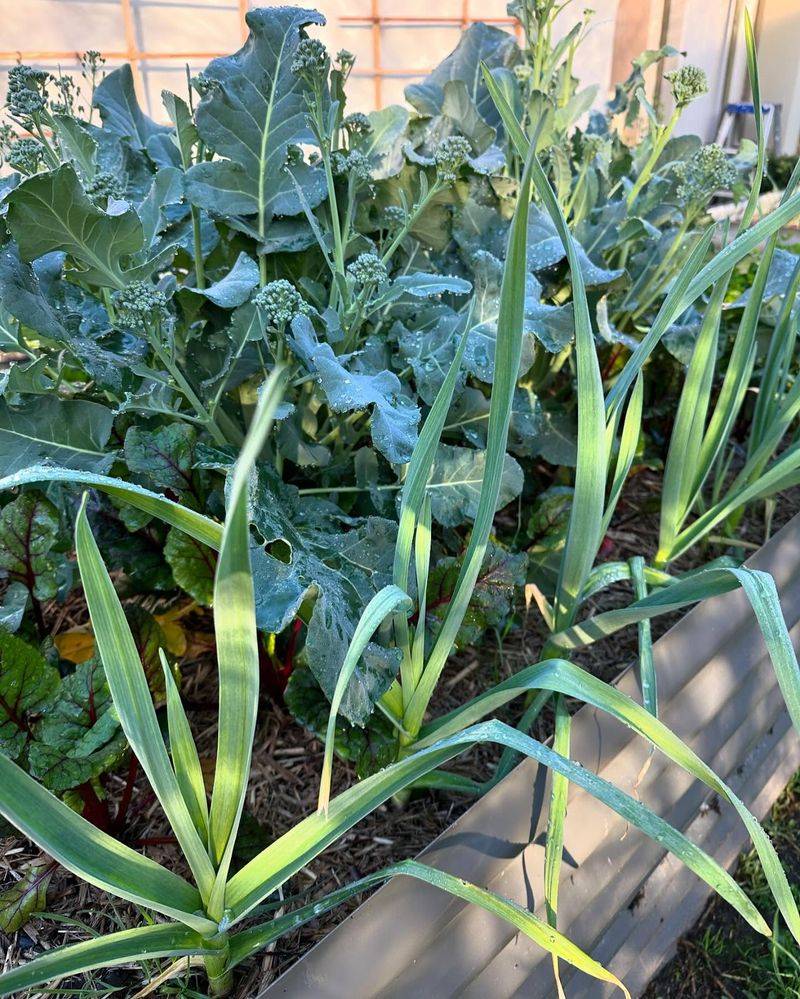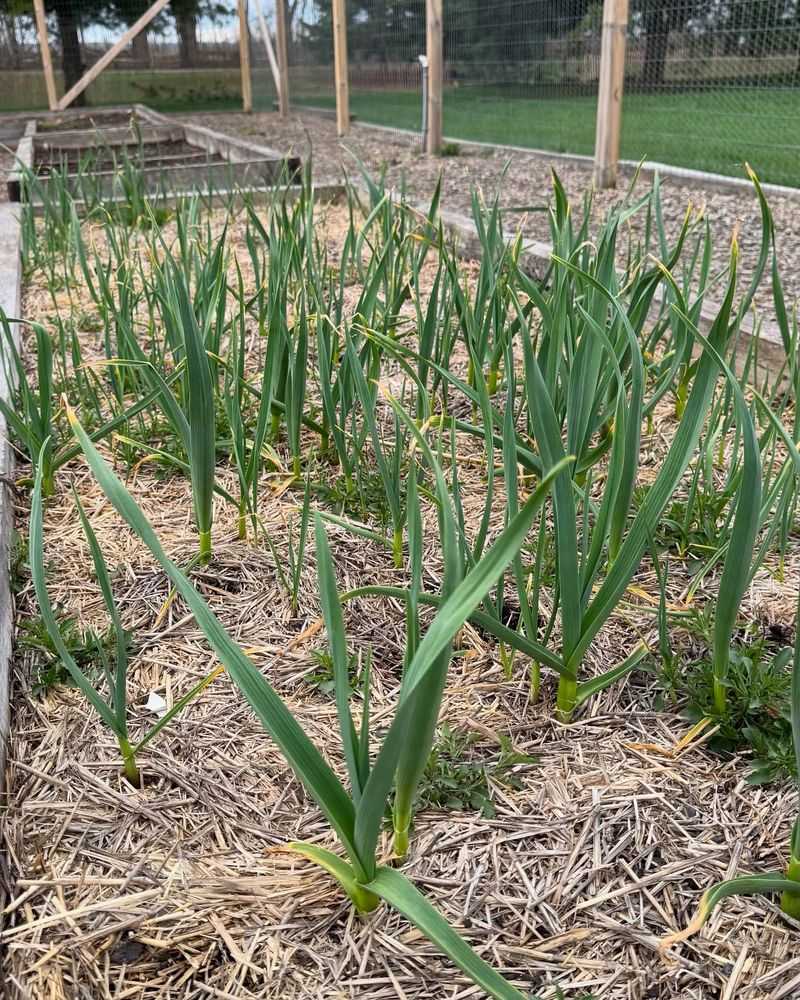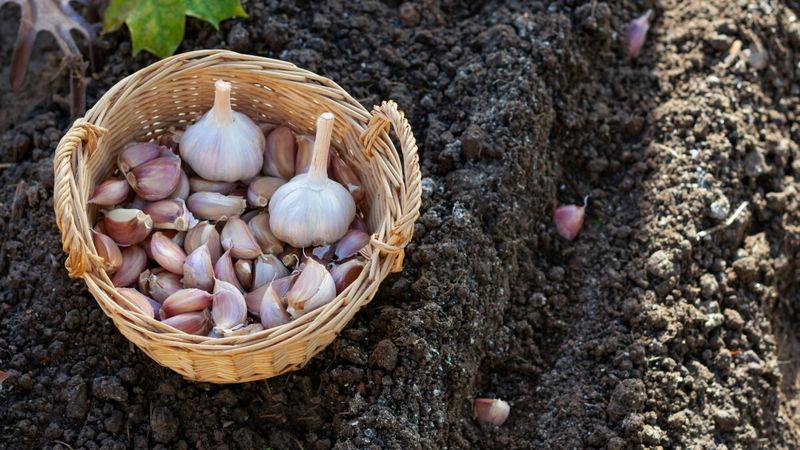Growing garlic in Vermont’s unique climate can be a rewarding experience for any home gardener. September marks the perfect time to begin preparing for fall garlic planting, which will yield delicious homegrown bulbs next summer.
With Vermont’s cold winters and variable spring conditions, knowing these special techniques can make all the difference between mediocre and magnificent garlic harvests.
1. Choose Cold-Hardy Varieties
Vermont’s harsh winters demand garlic varieties that can withstand freezing temperatures. Hardneck types like German Extra Hardy, Russian Red, and Music thrive in our climate and develop complex flavors from our cold seasons.
Local nurseries often stock varieties specifically tested in our region. Don’t gamble with softneck varieties better suited for southern climates – they simply won’t perform as well here.
2. Source Locally When Possible
Garlic adapts to local growing conditions over generations, developing resistance to regional pests and diseases. Vermont-grown seed garlic has already proven itself in our unique climate.
Farmers markets and local garlic festivals are goldmines for finding these pre-adapted varieties. Strike up conversations with Vermont garlic farmers – they’ll often share valuable growing tips specific to your area’s microclimate.
3. Prepare Soil By Mid-September
Vermont’s soil starts cooling quickly as autumn approaches, making September ideal for bed preparation. Remove all weeds and work in 2-3 inches of compost to improve drainage.
Sandy loam with plenty of organic matter creates the perfect garlic growing environment. A soil test from UVM Extension can identify specific amendments your garden needs. Adding bone meal now provides slow-release phosphorus that develops strong root systems during our long winters.
4. Time Your Planting Perfectly
Mid-October hits Vermont’s sweet spot for garlic planting – typically 2-3 weeks before the ground freezes solid. This timing allows roots to establish without significant top growth before winter.
Watch the weather patterns rather than the calendar. If we’re having an unusually warm fall, delay planting until temperatures consistently drop below 50°F during the day. Early planting risks premature sprouting, while planting too late means poor root development before the freeze.
5. Crack Bulbs Carefully
Breaking apart garlic heads requires gentle handling to avoid damaging the cloves. Each tiny nick creates an entry point for disease organisms during our wet spring thaws.
Work with clean hands and separate cloves 1-2 days before planting – not weeks ahead. The papery wrapper protects each clove and should remain intact. Select only the largest, firmest cloves for planting; small or damaged ones can go to your kitchen instead.
6. Master Proper Planting Depth
Vermont’s freeze-thaw cycles can heave shallow-planted garlic right out of the ground! Plant cloves 2-3 inches deep, measured from the top of the clove to the soil surface.
Use a dibble tool or the handle of a garden tool to create consistent planting holes. Position each clove with the pointed end up and the flat root end down. Improper orientation wastes the plant’s energy as it struggles to reorient itself during spring growth.
7. Space For Maximum Yield
Crowded garlic produces smaller bulbs – a common mistake among Vermont gardeners. Space cloves 6-8 inches apart in all directions to allow proper development.
Organize your planting in rows 12 inches apart for easy access during spring weeding. Consider raised beds for Vermont gardens with heavy clay soil – they warm faster in spring and provide better drainage during our wet seasons. The extra space improves air circulation, reducing fungal issues common in our humid summers.
8. Apply Protective Mulch Strategically
Mulching garlic in Vermont requires perfect timing. Wait until the ground has frozen (usually late November) before applying 4-6 inches of clean straw or leaves.
Premature mulching creates cozy homes for voles and mice that feast on garlic during winter. The mulch layer moderates soil temperature fluctuations rather than preventing freezing. Come spring, pull back mulch gradually as shoots emerge to prevent the pale, weak growth that results from plants struggling through heavy covering.
9. Plan Spring Fertilization Now
Vermont’s short growing season means garlic needs readily available nutrients when spring arrives. Prepare now by purchasing slow-release organic fertilizers high in nitrogen for early spring application.
Alfalfa meal, blood meal, or diluted fish emulsion work wonderfully for the spring feeding. Mark your calendar for mid-April fertilization – just as garlic shoots reach 4-6 inches tall. Fall preparation prevents scrambling for supplies when local garden centers haven’t yet stocked up for the season.
10. Record Keeping Makes Future Success
Starting a garlic journal creates a valuable resource for years to come. Label each variety as you plant and map your garden layout – Vermont winters have a way of removing all visible traces of fall planting!
Track planting dates, weather conditions, and spring emergence times. Note which varieties perform best in your specific Vermont microclimate. These records become increasingly valuable over multiple growing seasons, revealing patterns that lead to garlic mastery in your particular corner of Vermont.
11. Prevent Disease With Crop Rotation
Vermont’s sometimes wet conditions can harbor soil-borne diseases that affect allium plants. Never plant garlic where onions, leeks, or garlic grew within the past 3 years.
Map out your rotation plan now while this year’s garden is still fresh in your mind. Brassicas (cabbage family) make excellent preceding crops for garlic beds. Their different nutrient needs and pest profiles help break disease cycles that could otherwise build up in Vermont’s cool, moist soil conditions.
12. Prepare For Scapes In June
Hardneck garlic varieties produce delicious flower stalks (scapes) in early summer. Planning for this secondary harvest now means you won’t miss this Vermont delicacy next June.
Mark your calendar and research scape recipes during winter downtime. Removing scapes increases bulb size by 25-30% and provides an early taste of your garlic crop. Pesto, stir-fries, and grilled scapes are popular in Vermont’s farm-to-table restaurants and worth experimenting with in your kitchen.
13. Prepare For Vermont’s Unpredictable Spring
Vermont’s spring weather swings wildly between freeze and thaw. Prepare now by gathering row cover fabric to protect early garlic shoots from late frosts and sudden cold snaps.
Having these materials ready prevents panic when weather forecasts turn threatening. Garlic is generally cold-hardy, but tender spring growth can be damaged by severe temperature drops. A simple frame of hoops with row cover creates a microclimate that moderates these extremes without overheating plants on suddenly warm days.
14. Start Companion Planting Research
Certain plants naturally complement garlic in the garden. Use fall and winter to research companions like strawberries, spinach, and beets that grow harmoniously with garlic in Vermont’s climate.
Avoid beans and peas, which struggle when planted near garlic. Creating a companion planting map now ensures you’ll maximize garden space next spring. Strategic interplanting deters pests and makes the most of limited growing space – especially valuable in Vermont’s short growing season.
15. Prepare For Summer Water Needs
Vermont summers bring unpredictable rainfall. Install or repair irrigation systems in fall while working your garlic beds – much easier than disturbing growing plants later.
Soaker hoses or drip irrigation work best, keeping foliage dry to prevent fungal issues common in our humid climate. Garlic needs consistent moisture until about 2-3 weeks before harvest. Setting up rain barrels now provides free irrigation water next summer while reducing runoff from Vermont’s sometimes intense summer thunderstorms.
16. Join Vermont’s Garlic Community
Growing garlic connects you to a passionate community of Vermont gardeners. The Vermont Garlic Festival in September offers perfect timing to gather knowledge before planting.
Local garden clubs often host fall workshops specifically about garlic cultivation in our climate. Online groups like ‘Vermont Gardening’ on social media platforms provide regional advice when questions arise. Building these connections now ensures you’ll have experienced mentors to consult throughout the growing season ahead.

